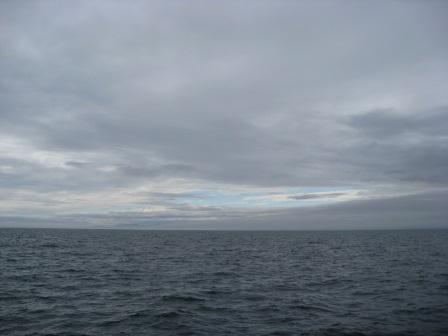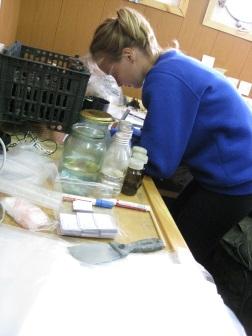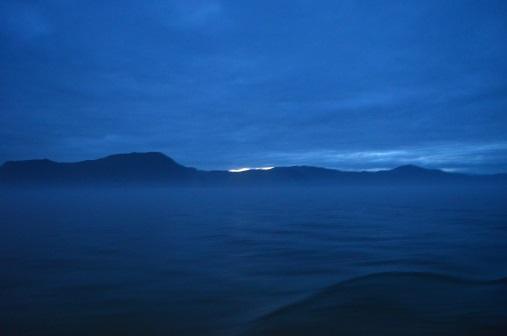16 august. Khurai sturming

The 16th of August began earlier than an ordinary day in the Class@Baikal-2017 expedition. At 6 a.m. everybody was ready to get the first gravity core. The aim of this day was the study of a deep-water Khuray depositional system. This is a very interesting geological object prof. Marina Solovieva told us the previous evening. First, we plan to work for two days at the Khuray system but the two days ago storm changed our plans and gave us no choice. Khuray system was to be studied during an only day. Cores were taken from the significant depths – at about 1.5 km. I can’t say that the weather was friendly for us, the fog, low clouds, and relatively strong wind met everybody who went out to the deck.

We managed to take two cores before the breakfast and there were very few sediments inside them. Channels which the sediments transport along are filled with mainly sand and a sand is poorly penetrated by the core due to its high density. Most of this day cores were like this and only couple of cores gave us more than a meter of sediments. This fact makes the work easier and quicker but everybody wants to take as much as possible from each core! This will help us to make a full study of an object.
After lunch, the weather started to become more pleasant, there were pieces of a blue sky above the water sometimes. The wind decreased to the evening.

A very important for the first-time participants event took place after lunch, they visited a machine room – the central part of the vessel. It was very difficult to speak louder than the machines work, but we managed to ask the senior mechanist for some questions and even hear the answers Every machine and mechanism is in almost ideal condition. It is obviously that the personnel take care for the “heart” of the vessel.

Moving to dinner the members of the expedition got excited. It was obvious that we would manage to take eleven cores planned for the day but we wanted to overdo the plan! Right after dinner the overplanned core was taken!


Due to the exact and collective work, both on the deck and in the laboratories, we have taken twelve cores for a day. It exceeded our initial expectations. Volume of taken sediments wasn’t too big but that’s geological reality. Even these data may be used to receive the relatively full conclusions.




Due to the exact and collective work, both on the deck and in the laboratories, we have taken twelve cores for a day. It exceeded our initial expectations. Volume of taken sediments wasn’t too big but that’s geological reality. Even these data may be used to receive the relatively full conclusions.

